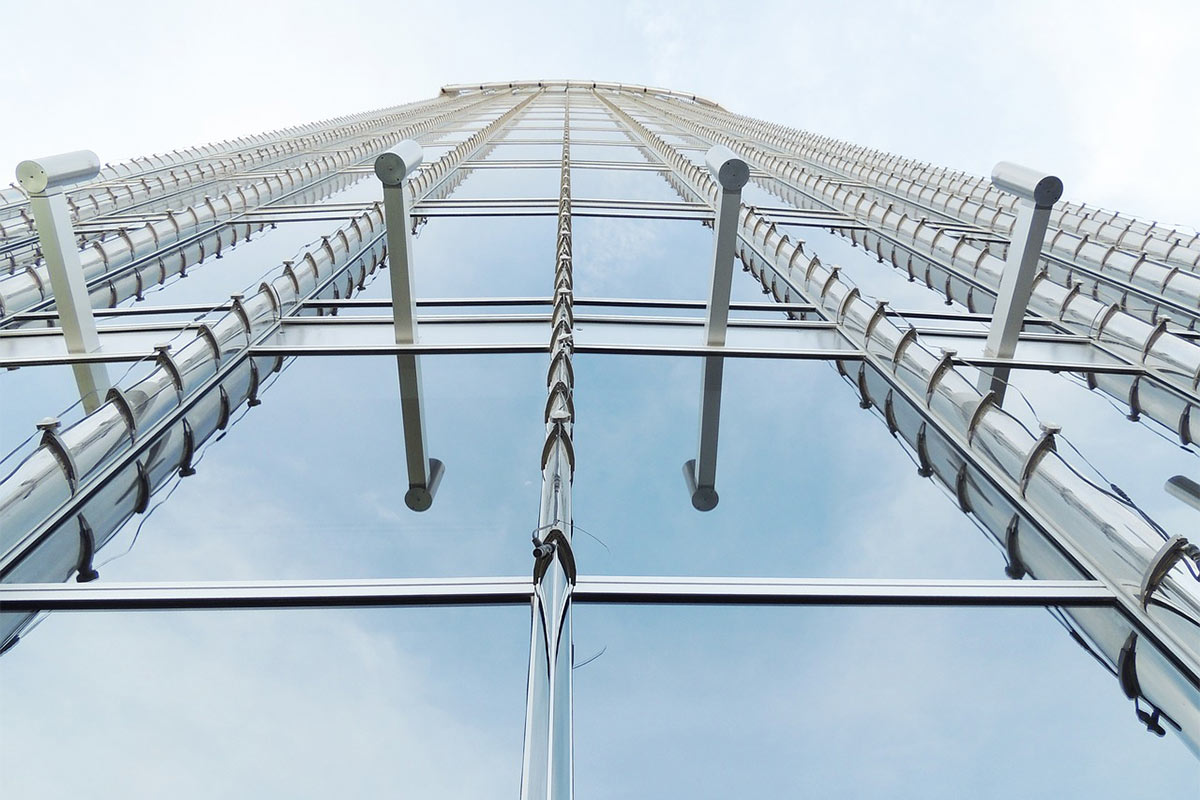As buildings across the world become increasingly complex, it only makes sense that the technology used to keep them cool would be equally advanced! How is the tallest building in the world protected from its desert surroundings? What natural and technological measures do we combine to keep buildings cool? More importantly, in a world ever-more concerned with climate change, how are these technologies used with global warming in mind?
Here, we’ve taken a look at some of the advanced natural and technological measures that buildings use to adapt to their surroundings:
Designed for efficiency
Leading the way in energy efficient design is the Seattle Amazon office. The building is heated by capturing the warm air produced by data centres — a great way to re-use waste for a key purpose!
Surprisingly, Amazon do not actually own the data centres here. The heat is collected from the Westin building across the street from their offices. It’s a two-fold victory, as it helps Amazon to save energy and gives Westin a good way of sustainably dealing with waste heat.
Heated water travels through pipes leading from the data centres to a central Amazon plant, before being put through heat-reclaiming chillers. This is then used to supply the office’s heating needs, and the now-cold water is sent back to Westin to help cool their data centres. Amazon is set to save 65 million pounds of coal’s worth of CO2 emissions over 25 years with this approach.
Sky-high viewing
Giving tourists and visitors a visual treat in the form of a 450-foot-high view of the Sussex coast is the British Airways i360 observation tower. As the world’s tallest moving observation tower, this building set a new challenge for climate control — the structure houses a restaurant, a shop, conference rooms, exhibition spaces, wedding venues, and of course, a 360° panoramic view in its moving 94-ton pod.
Daikin VRV IV systems are used to supply the building with heating from renewable energy sources. A constant supply of fresh air is circulated by heat recovery ventilation units throughout the building — this is crucial for reducing the demand on the air conditioning units that need to balance the indoor temperature with a significantly different outside temperature.
The towers seaside location means that it has to be able to adapt to its surroundings. One, the units need to be out of sight. Two, they need to be able to withstand the corrosive nature of salty sea air! Therefore, the VRV IV outdoor units have been installed out of sight and are treated with a specialist factory-applied Blygold coating, to protect them from the salt in the air. The result is an energy-efficient, streamlined, and sea-air-ready HVAC system that supports this complex and unique building.
A tall order
The world famous Burj Khalifa in Dubai stands at an impressive 2,716.5 feet. Summer months in Dubai can see temperatures soar as high as 41°C. Keeping a tower this tall cool is a task in and of itself, let alone with the surrounding temperature being so extreme. So, how do they do it?
The building is designed to stay cool in the desert heat through the use of state-of-the-art cooling technology. Primarily, ice-chilled water is used to cool the building, and this is supplied by three plants. During off-peak hours, the central water plant creates an ice slurry that makes the water colder than a chiller could manage. This chilly water is sent through the tower in a series of pipes to heat exchangers at three different levels. Once the cold water has cooled the air for the air conditioning unit to use, it is sent back down to the central water plant again.
There are numerous benefits to using ice to cool a building. Firstly, it is better for the environment, as it allows the tower to make savings on energy use. Secondly, it reduces the amount of space needed to dedicate to cooling equipment. Interestingly, the air conditioning system had to be gradually activated over a week-long period. This was to prevent pockets of warm air from forming in the building.
To combat overheating, the tower also uses air-cooler chiller systems to support the data centres.
Predictions for the future
With a bright future ahead for the world’s building projects, we must increasingly turn our focus towards climate control. The Independent reported on another ambitious project blossoming in Dubai — the world’s largest shopping centre. But calling it a shopping centre seems a little unfair; the project intends to cover 48 million square feet, making it a shopping city.
Planning is already underway for the world’s largest theme park, a Broadway inspired theatre and an Oxford-inspired shopping area to be installed at The Mall of the World in America. Crucially, it is being touted as the first climate-controlled city in the world.
As time goes on, we will continue to see natural and technological solutions for both heating and cooling within our buildings. The world’s structures are only going to get more complex, so it will be interesting to see how requirements like heating and cooling are addressed in such builds.
You are reading Buildings around the world with complex climate control


